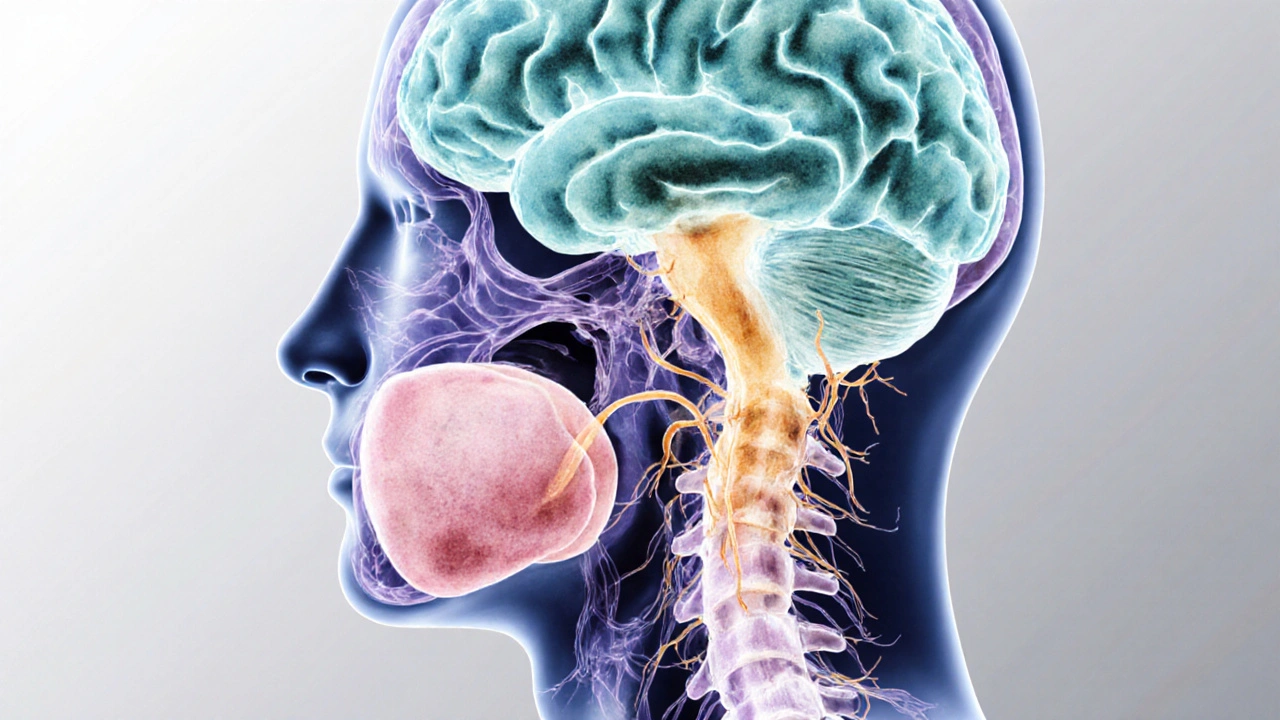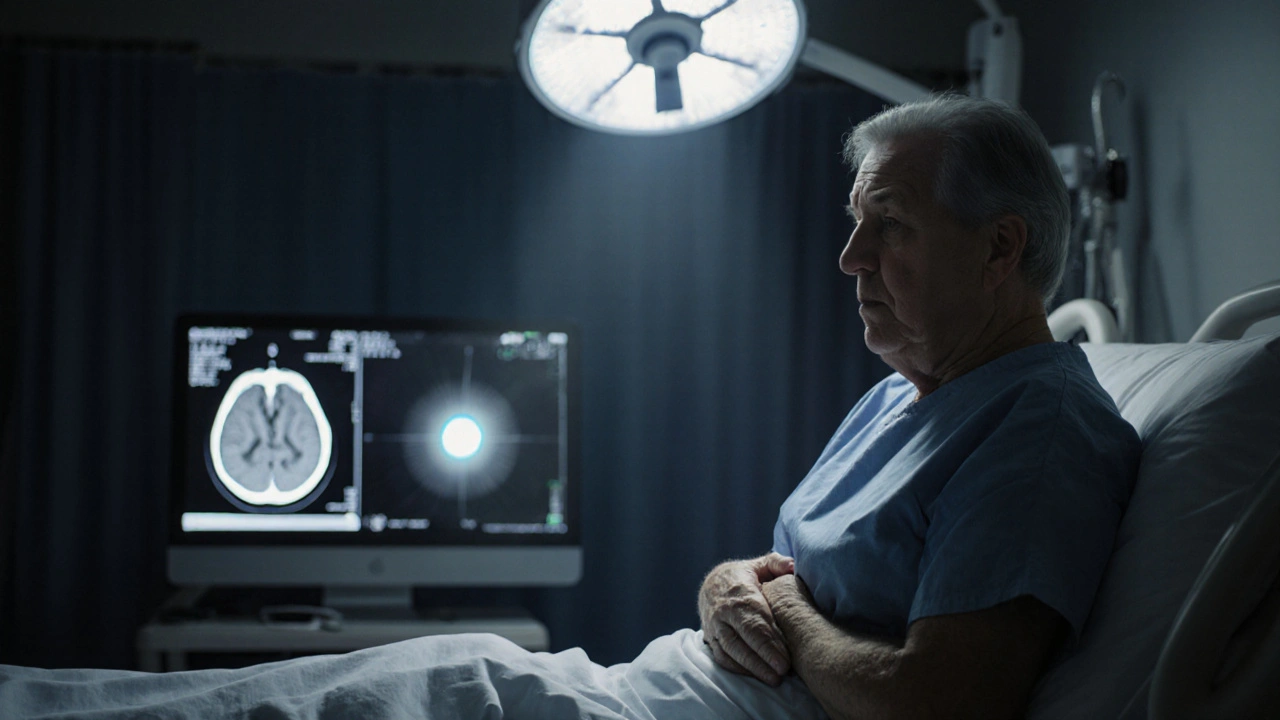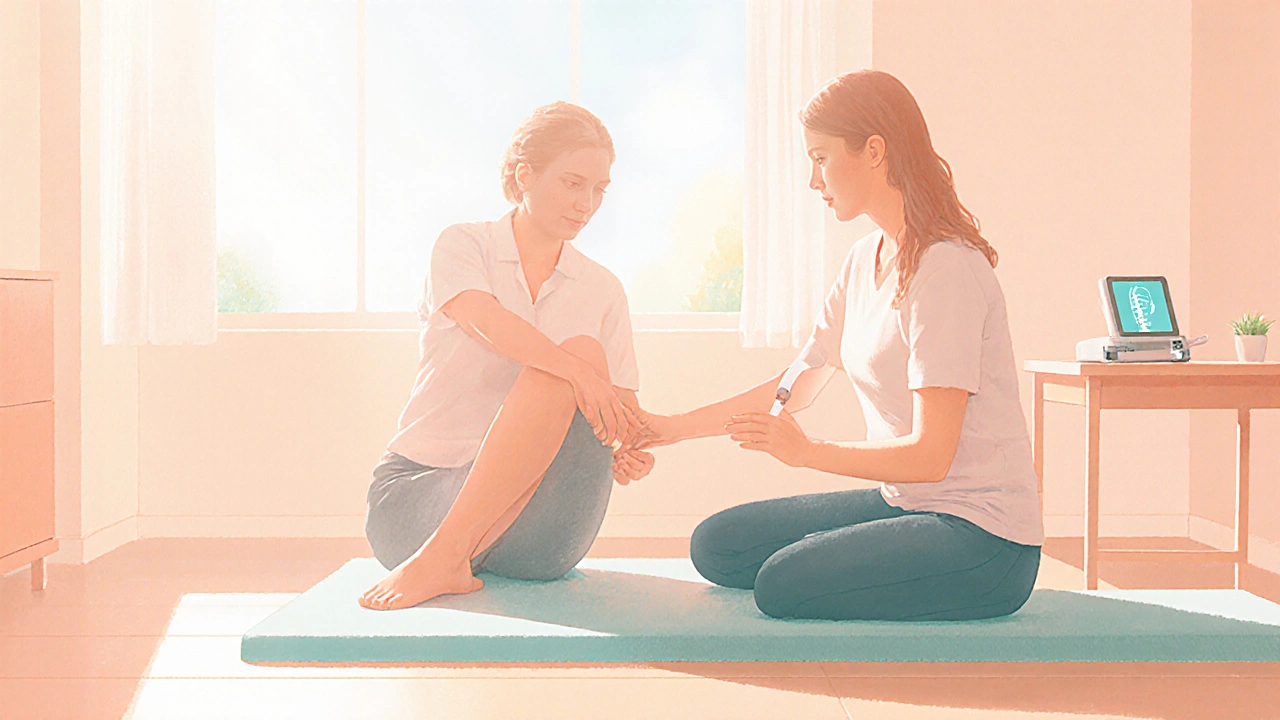How Head Surgery and Head Trauma Lead to Frequent Urination

Oct, 14 2025
Key Takeaways
- Both head trauma and head surgery can disrupt the brain’s bladder‑control pathways, causing sudden increases in bathroom trips.
- Neurogenic bladder is the most common mechanism, often presenting as urgency, frequency, or incontinence.
- Symptoms usually appear within days to weeks after injury or operation, but can be delayed for months.
- Early evaluation by a neurologist or urologist dramatically improves outcomes.
- Treatment ranges from lifestyle tweaks to medications and specialized pelvic‑floor therapy.
Ever wondered why a concussion or brain surgery sometimes makes you dash to the restroom far more often than before? The link isn’t magic-it’s the nervous system. When the brain or skull gets jolted, the delicate communication line between the brain and the bladder can go haywire, leading to what doctors call urinary frequency after head trauma. This article breaks down the why, how, and what‑to‑do, so you can spot the signs early and get the right help.
Head Trauma is any injury to the skull or brain caused by a blow, fall, or penetrating wound. It ranges from mild concussions to severe hemorrhages. Head Surgery is a medical procedure that opens the skull to treat conditions like tumors, aneurysms, or traumatic bleeding. Both scenarios can trigger a cascade of neural disruptions that affect bladder control.
How the Brain Controls the Bladder
Before we dive into injuries, let’s see the normal wiring. The bladder’s urge to fill and empty is managed by a network called the Autonomic Nervous System (sympathetic and parasympathetic fibers that regulate involuntary organs. Signals travel from the bladder up the Sacral Spinal Cord (the lower part of the spinal cord (S2‑S4) that directly innervates the bladder to the brainstem, then to higher centers in the pontine micturition center and the cerebral cortex. When you feel the need to go, the brain sends a “release” command via parasympathetic pathways, while the sympathetic system keeps the bladder closed until it’s socially appropriate.
When Head Trauma Throws the Switch
A blow to the head can damage any part of this chain. Common mechanisms include:
- Direct cortical injury: The frontal lobes, especially the prefrontal cortex, help inhibit premature bladder emptying. Damage here removes the “brake,” leading to urgency.
- Brainstem disruption: The pontine micturition center sits in the brainstem. Hemorrhage or swelling can blunt its ability to coordinate the release signal.
- Diffuse axonal injury: Shearing forces stretch nerve fibers, slowing signal speed and causing miscommunication between bladder and brain.
- Neuroinflammation: Cytokines released after injury (IL‑1β, TNF‑α) can sensitize bladder afferents, making even small volumes feel urgent.
Statistical surveys from 2022‑2024 show that about 30% of patients with moderate‑to‑severe traumatic brain injury report new‑onset urinary frequency within the first month.
How Head Surgery Can Trigger the Same Symptoms
Operating on the brain involves opening the skull, manipulating tissue, and sometimes placing devices. The most frequent culprits are:
- Ventriculoperitoneal Shunt (a tube that drains excess cerebrospinal fluid to relieve hydrocephalus. The shunt’s pressure changes can alter intracranial pressure, affecting the micturition center.
- Edema and temporary compression: Post‑operative swelling can press on the hypothalamus or brainstem, disrupting autonomic regulation.
- Anesthetic effects: Certain anesthetics (e.g., ketamine) have bladder‑stimulating properties.
- Scar tissue: Healing tissue near the frontal lobes can interfere with inhibitory pathways.
In a 2023 multicenter study of 1,100 craniotomy patients, 12% experienced persistent urinary frequency three months after surgery, compared with 4% in a matched non‑surgical group.

Neurogenic Bladder: The Core Diagnosis
When head injury or surgery messes with the control loop, doctors label the bladder problem as Neurogenic Bladder (a dysfunction of the bladder caused by nervous system damage. Types include:
- Detrusor overactivity: The bladder muscle contracts too early, causing urgency and frequency.
- Detrusor underactivity: Weak contractions lead to incomplete emptying, which can paradoxically increase daytime trips.
- Detrusor‑sphincter dyssynergia: The sphincter fails to relax when the bladder contracts, creating a feeling of urgency without actual voiding.
Urodynamic testing (pressure‑flow studies) is the gold standard to pinpoint which pattern you have.
Typical Timeline of Symptoms
| Time Frame | Common Triggers | Typical Symptom Pattern |
|---|---|---|
| Hours‑Days | Acute swelling, anesthetic residuals | Sudden urgency, up to 15 trips/day |
| Weeks‑Months | Scar formation, neuroinflammation | Persistent frequency, nocturia (night trips) |
| 6‑12Months | Chronic neurogenic changes | Stabilized pattern, may improve with therapy |
When to Seek Help
Frequent bathroom trips are annoying, but they can signal something serious. Call a doctor if you notice any of the following:
- More than eight voids in 24hours for more than two weeks.
- Accompanying leakage or urge incontinence.
- Painful burning during urination (could mean infection).
- Fever, chills, or flank pain (possible kidney involvement).
- Difficulty starting a stream or feeling that the bladder never empties fully.
Early assessment can rule out urinary tract infections, medication side‑effects, or bladder stones, all of which can mimic neurogenic symptoms.

Management Strategies
Once neurogenic bladder is confirmed, treatment follows a stepped approach:
- Behavioral modifications: Fluid timing, bladder training (gradually extending intervals between trips).
- Pelvic‑floor physiotherapy: Strengthening the sphincter can improve control, especially when the issue is dyssynergia.
- Medication: Anticholinergics (oxybutynin, solifenacin) calm a overactive detrusor. For urge incontinence, mirabegron (a β‑3 agonist) is an alternative with fewer dry‑mouth side effects.
- Intermittent catheterization: If you can’t empty fully, a sterile catheter every 4‑6hours prevents bladder over‑distension.
- Neuromodulation: Sacral nerve stimulation or tibial nerve therapy can re‑wire the faulty signals. Success rates in post‑traumatic populations hover around 70%.
Each option should be tailored to the specific urodynamic pattern and your lifestyle.
Checklist for Patients and Caregivers
- Record voiding frequency, volume, and any urgency episodes for at least three days.
- Note any recent medication changes (e.g., diuretics, antidepressants).
- Schedule a urology appointment if symptoms persist beyond two weeks.
- Bring imaging reports (CT, MRI) and surgery notes; they help the specialist map potential nerve pathways involved.
- Ask about urodynamic testing and the pros/cons of each treatment option.
Future Outlook
Research into post‑traumatic bladder dysfunction is heating up. Emerging therapies include:
- Stem‑cell injections into the sacral cord-early trials show promise in restoring normal signaling.
- Targeted anti‑inflammatory drugs that dampen neuroinflammation without suppressing immunity.
- Smart catheters that monitor bladder pressure and alert you via a phone app.
While these are still experimental, they underscore that frequent urination after head injury is not a permanent fate.
Frequently Asked Questions
Can a mild concussion cause urinary frequency?
Yes. Even a Grade1 concussion can disturb the frontal‑lobe inhibition pathways, leading to urgency. The effect is usually short‑lived, but if it lasts more than two weeks you should get evaluated.
Is it normal to need to urinate at night after brain surgery?
Nocturia (nighttime trips) is common after head procedures because swelling can affect the hypothalamic thirst center. It often improves as swelling subsides, but persistent nocturia warrants a urology consult.
Do blood‑type‑specific medications help?
Current evidence does not support blood‑type‑based drug selection for neurogenic bladder. Treatment is guided by urodynamic findings, not blood type.
Can pelvic‑floor exercises replace medication?
For mild detrusor overactivity, a structured pelvic‑floor regimen can reduce urgency by up to 30%. Severe cases usually still need medication, but exercises improve overall outcomes.
What red‑flag symptoms suggest a urinary infection rather than neurogenic cause?
Fever, flank pain, cloudy or foul‑smelling urine, and burning during urination point to infection. A simple urine dipstick will differentiate the two.
